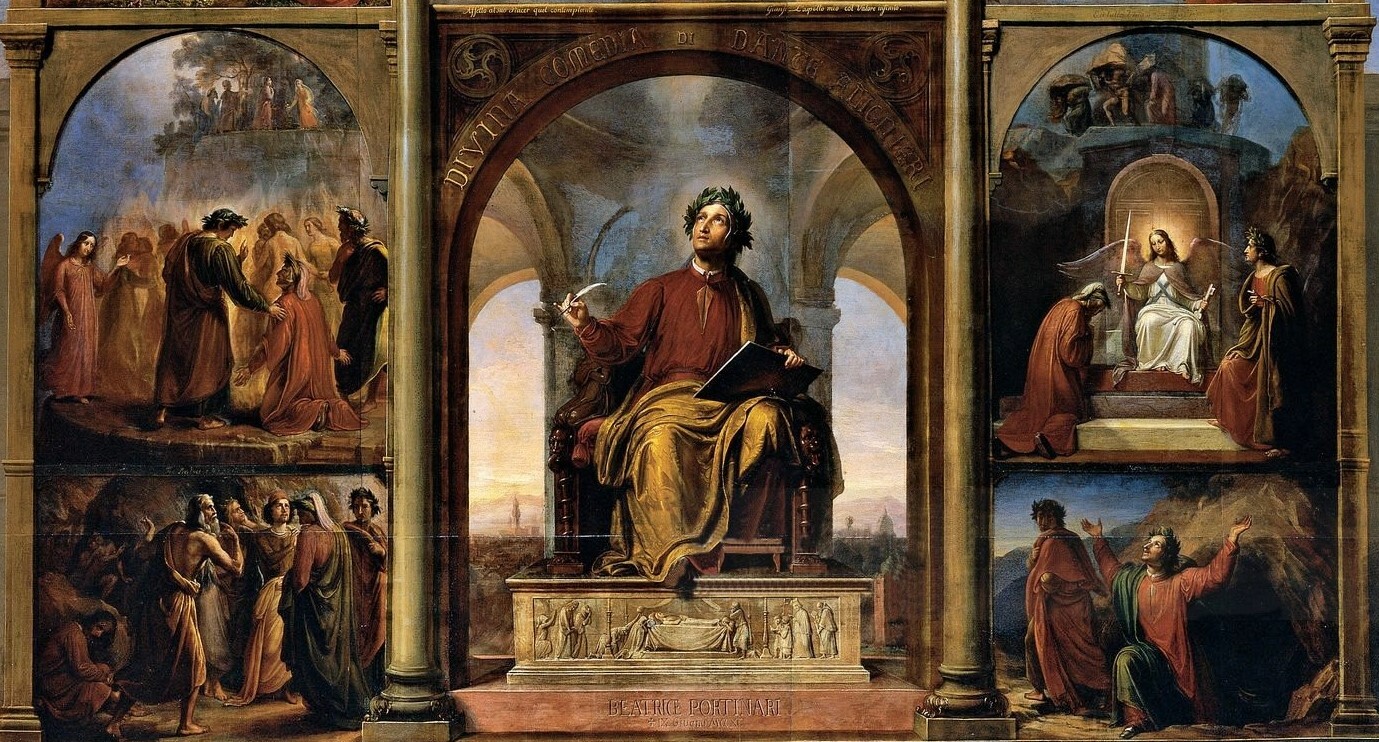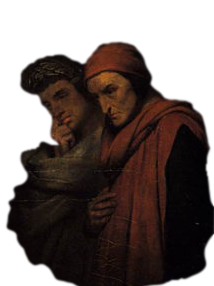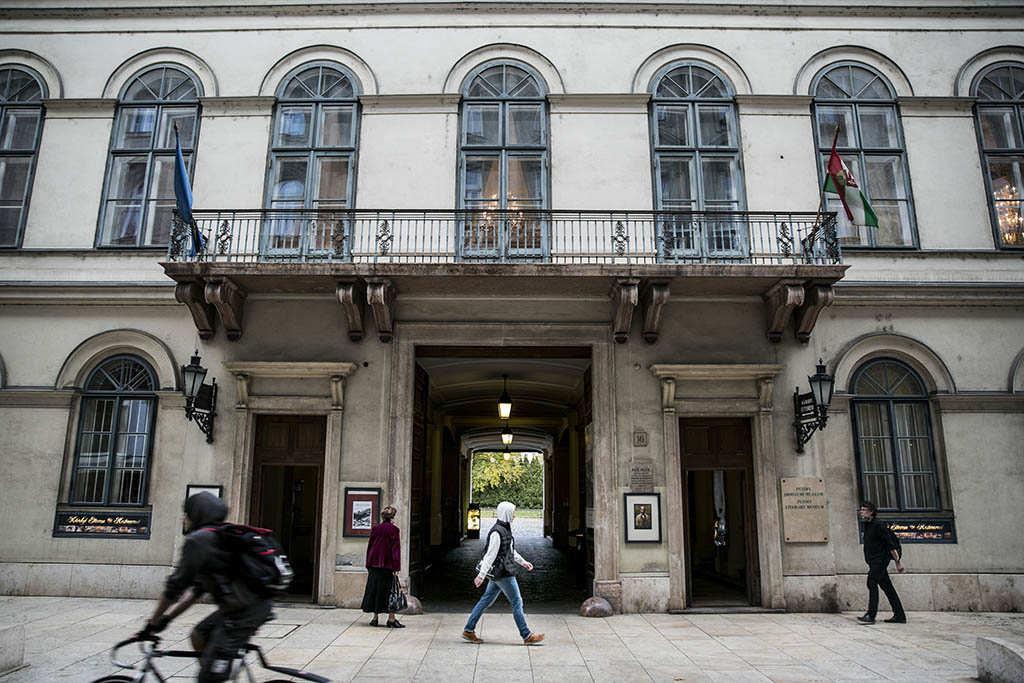Several artists over the centuries have made drawings and engravings from Dante's text. Here are some examples:

ART
DANTE
IN
IN
The miniatures
Entire and fruitful is the tradition of superbly illuminated and decorated codices of the Divine Comedy. With the original text devoid of artistic representations, the reading of the illuminated images is articulated in a multiplicity of areas and artists in which it is possible to emphasize: the analysis of style, reflection and relationship to the text, the careful investigation of the source, the different illustrative solutions proposed and of the various types of narration.
Today the divine illustrated comedies are kept in many public libraries in Europe and America.
For example, the British Library is home to the illuminated edition commissioned by King Alfonso of Aragon, in which Priamo della Quercia was responsible for the miniatures illustrating Inferno and Purgatorio, while Giovanni di Paolo was called upon to produce the scenes from Paradise.
Today the divine illustrated comedies are kept in many public libraries in Europe and America.
For example, the British Library is home to the illuminated edition commissioned by King Alfonso of Aragon, in which Priamo della Quercia was responsible for the miniatures illustrating Inferno and Purgatorio, while Giovanni di Paolo was called upon to produce the scenes from Paradise.
- Dante and Beatrice, Anonymous Miniaturist, 14th century
- Inferno, canto XVIII, Priamo della Quercia, c. 1444-1452.
- Inferno, canto XIX, Bartolomeo di Fruosino, c. 1420.
ILLUSTRATIONS OF THE 1400S AND 1500S During Humanism, the interest directed toward the Divine Comedy grew considerably. The illustrations made by Sandro Botticelli, commissioned by Lorenzo di Pierfrancesco de Medici between 1480- 1495, reveal a deep care and attention to the artist's understanding of Dante's text. However, of about one hundred drawings executed on parchment, the Voragine Infernale is the only complete illustration. Botticelli's interest and remarkable grace subsequently influenced many other artists, Italian and otherwise, in composing works and graphic illustrations inspired by Dante's verses. Figures such as Federico Zuccari and the Flemish painter Jan van der Straet are remembered. The former worked at the Spanish court of Philip II between 1586- 1588 executing about eighty- eight drawings related to the Comedy. The latter worked in Florence and executed about thirty drawings and paintings. |
- Inferno, canto XXXIII, Petrus de Plasiis, 1491
- Purgatorio, canto XXII, Alessandro Vellutello, 1544
- Inferno, canto I, Jan van der Straet, 1587
- Inferno, canto XIX, Bartolomeo di Fruosino, 1420 ca.
ILLUSTRATIONS IN THE 1800S
During the long centuries of the seventeenth and eighteenth centuries, artists attention to the grand Italian poem suffered a setback. The themes present within Dante's text are too far removed from the scientific changes introduced by the revolution and the new Enlightenment society.
The myth of Dante and his journey to the afterlife regained interest during the nineteenth century, at a time when political struggles, religious themes and Romantic sentiments were most keenly felt. Beginning with John Flaxmann, an English draughtsman and sculptor and exponent of the Victorian Gothic revival. The latter produced more than a hundred plates in which he eliminated superfluous elements and background landscapes so that the characters were clearly delineated on the sheet.
Moving to French soil, Gustave Doré published a cycle of illustrations of Inferno in 1861 and then continued with the publication of the single volume of Purgatory and Paradise in 1868. His works are charged with solemnity and drama, where the play of black-and-white contrasts emphasizes the hellish and heavenly settings. Not to mention the well-known English writer William Blake, who produced about more than a hundred illustrations and drawings (many of them watercolor) that evoke visionary and otherworldly atmospheres.
The myth of Dante and his journey to the afterlife regained interest during the nineteenth century, at a time when political struggles, religious themes and Romantic sentiments were most keenly felt. Beginning with John Flaxmann, an English draughtsman and sculptor and exponent of the Victorian Gothic revival. The latter produced more than a hundred plates in which he eliminated superfluous elements and background landscapes so that the characters were clearly delineated on the sheet.
Moving to French soil, Gustave Doré published a cycle of illustrations of Inferno in 1861 and then continued with the publication of the single volume of Purgatory and Paradise in 1868. His works are charged with solemnity and drama, where the play of black-and-white contrasts emphasizes the hellish and heavenly settings. Not to mention the well-known English writer William Blake, who produced about more than a hundred illustrations and drawings (many of them watercolor) that evoke visionary and otherworldly atmospheres.
- Purgatorio, canto VII, Gustave Doré, 1899
- Purgatorio, canto VII, William Blake, 1824-1827
- Purgatorio, canto VII, John Flaxman, 1787-1894
ILLUSTRATIONS IN THE 900S Interest in the Divine Comedy endures and generates interest even throughout the 20th century, since with its themes Dante managed to delve into the human soul, managing to capture doubts, fears, fragility, but also faith and hope. A perfect example of how this text has become deeply part of Italian identity is the Alinari competition, a leading family firm in the field of national and international artistic photography. This is announced at the beginning of the century (1901) with the intention of producing a new print of the text of the Divine Comedy on the occasion of the VI centenary of the death of the Florentine poet. It was joined by many young painters and draftsmen from all over the peninsula, including Giorgio Kiener, Aldolfo de Carolis, and Ezio Marzi, who tried their hand at illustrating some cantos of their choice from the famous text. |








Visit the Petőfi Irodalmi Múzeum
Károlyi utca 16, 1053
Budapest, Hungary
Budapest, Hungary
Petofi Museum of Literature
Open Tuesday to Sunday:
10 a.m.-6 p.m.
10 a.m.-6 p.m.

Website made by Zanna Giuliana


